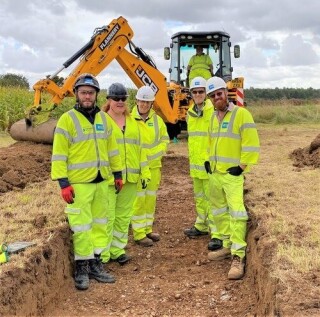A possible Romano-British settlement, Bronze Age cremations and a prehistoric millstone are among the archaeological discoveries along the route of the A12 Chelmsford to A120 widening scheme in Essex.
Over the last five months, a team of more than 80 archaeologists have excavated 117 trial trenches and surveyed an area of 1,039 hectares. Trial trenching is a method of archaeological evaluation used to characterise and determine the archaeological potential of a site. The results of the trial trenching are used to inform any future stage of work.
National Highways project director Stephen Elderkin said: “The work we are doing along the A12 route aims to unearth archaeological sites and finds that will help shape our understanding of how life in Essex and beyond has developed through 10,000 years of human history.
“A good, early understanding of the unique relationship between the improvement scheme and the surrounding historical environment will help us avoid any unexpected surprises and unnecessary delays once construction begins.”
Construction of the road widening scheme is not expected to start until 2023 at the earliest.

By analysing historical records and digging trial trenches, the archaeologists found evidence of a Romano-British settlement, including pottery and glazed tableware. Sites across the route revealed evidence of building materials including fired clay daub and the remains of both an ‘imbrex’, a raised Roman roofing tile, and a ‘tegulae’, a flat Roman roofing tile. There was also evidence of emmer, the main cereal grown and consumed in the Bronze and Iron Ages and an ancient millstone.
The archaeological evidence will be combined to produce a report, which will provide site-by-site information on the excavations and ultimately inform the next stages of archaeological work. These later stages may comprise bespoke packages of large-scale archaeological excavation ahead of the construction works or archaeological monitoring during the works themselves.
Got a story? Email news@theconstructionindex.co.uk





